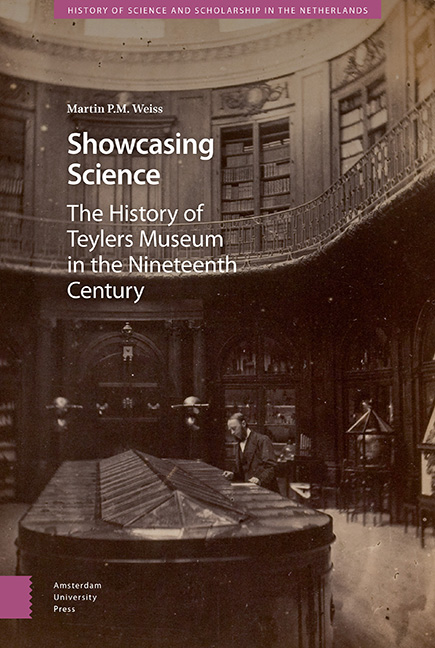Book contents
- Frontmatter
- Contents
- List of Illustrations
- 1 Introduction
- 2 The Birth of a Musaeum
- 3 Van Marum – Empiricism and Empire
- 4 Van der Willigen – Precision and the Discipline of Physics
- 5 Lorentz – Function Follows Form and Theory Leads to Experiment
- 6 Conclusion
- Appendix
- Acknowledgements
- Archives
- Bibliography
- Index
3 - Van Marum – Empiricism and Empire
Published online by Cambridge University Press: 21 November 2020
- Frontmatter
- Contents
- List of Illustrations
- 1 Introduction
- 2 The Birth of a Musaeum
- 3 Van Marum – Empiricism and Empire
- 4 Van der Willigen – Precision and the Discipline of Physics
- 5 Lorentz – Function Follows Form and Theory Leads to Experiment
- 6 Conclusion
- Appendix
- Acknowledgements
- Archives
- Bibliography
- Index
Summary
I Van Marum's Work at Teylers Museum
Van der Vinne Resigns
After having spent more than one and a half years helping John Cuthbertson construct the largest electrostatic generator ever to be built and helping him negotiate all the unexpected challenges this brought about – the huge, 65 inch glass discs that are rotated to generate friction were in themselves an extraordinary feat of glass casting – finally seeing the machine installed at Teylers Museum and being able to crank it up for the first time must have made Van Marum feel like a child unwrapping an eagerly anticipated birthday present. After much delay this stage was finally reached in December of 1784, just one month after Van Marum had been appointed director of Teylers Museum. Conscious of whom he had to thank for this amazing machine, Van Marum wasted no time in demonstrating it to the trustees of the Teyler Foundation.
But as enamoured as Van Marum was of this powerful device now at his disposal, his fellow employee of the Teyler Foundation, Vincent van der Vinne, was not. As mentioned in the previous chapter, it did not take him long to complain about Van Marum's constant experimenting to the trustees. They, however, took Van Marum's side in this dispute and explicitly stated that
because of the extensive aims that the Trustees have in mind for the public good, there will necessarily be some nuisance for the Occupant [of the Foundation House].
Because Van Marum wanted to perform experiments with the electrostatic generator, he would have to
be present repeatedly in the Musaeum for that purpose both in the evening and in the daytime.
Van der Vinne was granted some respite when damp weather prevented Van Marum from continuing with his experiments throughout the winter, but the apparent serenity did not last long. As soon as “an unexpected Frost” befell Haarlem in early February, Van Marum took this opportunity to demonstrate the electrostatic generator to his fellow members of Teylers Second Society. They were suitably impressed, recording that the “experiments […] have completely answered or even surpassed the expectations that had been formed of this exceptionally large and excellent piece of artisanship”.
- Type
- Chapter
- Information
- Showcasing ScienceA History of Teylers Museum in the Nineteenth Century, pp. 111 - 196Publisher: Amsterdam University PressPrint publication year: 2019



